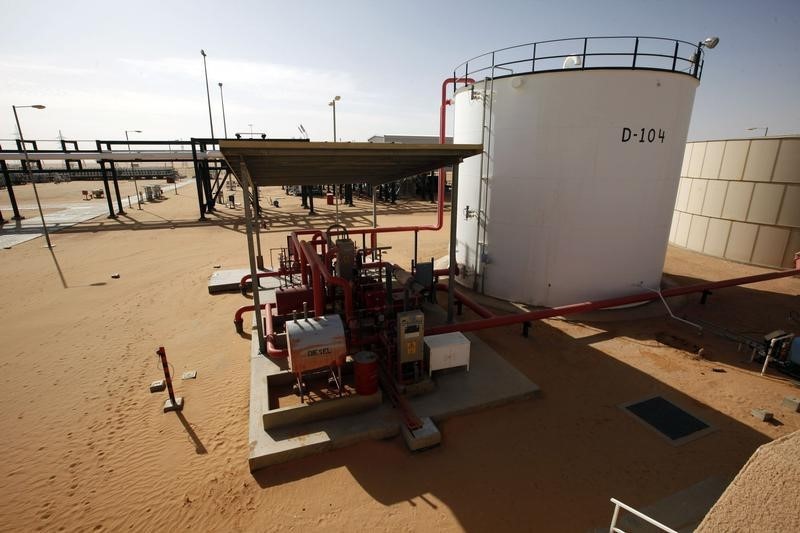(Adds details of bitumen seepage, CSS process, quote)
By Nia Williams
CALGARY, Alberta, March 21 (Reuters) - The Alberta Energy
Regulator said on Monday it is implementing additional
requirements at Canadian Natural Resources Ltd's CNQ.TO
Primrose oil sands project after concluding excessive steaming
caused a 6,648 barrel bitumen emulsion leak in 2013.
The requirements include permanent limits on the steam
volumes the company is allowed to use to extract bitumen from
underground reservoirs, and a requirement that CNRL seek
approval for each steaming cycle at its Primrose East site.
"The restrictions do amount to a permanent ongoing reduction
in the intensity of the company's operations. The company will
not be able to pursue its original operating strategy at
Primrose," Kirk Bailey, executive vice president of operations
at the AER said.
CNRL has been operating under steam restrictions at Primrose
since the seepage was discovered and in July 2013 company
President Steve Laut said the project was producing about 10,000
barrels per day less than previously expected as a result.
Bitumen emulsion - a mixture of bitumen, sand and water -
was discovered oozing to the surface at two locations at CNRL's
Primrose project in northern Alberta in May 2013. Two more leaks
were discovered over the next month, prompting the AER to impose
restrictions on the site and launch an investigation.
Biutmen seepage to the surface as a result of oil sands
operations are not permitted under Alberta energy regulations. A
number of animals died as a result of the leak, which continued
for months, including birds, mammals and amphibians.
The investigation, described by Bailey as one of the most
complicated ever undertaken by the AER, concluded the seeps were
caused by excessive steam volumes along open conduits such as
well bores, natural fractures and faults and hydraulically
induced fractures.
Cyclic steam simulation involves injecting high-pressure
steam into an oil well to liquefy viscous bitumen so it can flow
to the surface.
The AER said it looked at other producers using the same
technology for oil sands extraction, such as Imperial Oil
IMO.TO , and concluded those projects posed no risk of similar
seepages.
- English (USA)
- English (UK)
- English (India)
- English (Australia)
- English (South Africa)
- English (Philippines)
- English (Nigeria)
- Deutsch
- Español (España)
- Español (México)
- Français
- Italiano
- Nederlands
- Português (Portugal)
- Polski
- Português (Brasil)
- Русский
- Türkçe
- العربية
- Ελληνικά
- Svenska
- Suomi
- עברית
- 日本語
- 한국어
- 简体中文
- 繁體中文
- Bahasa Indonesia
- Bahasa Melayu
- ไทย
- Tiếng Việt
- हिंदी
UPDATE 1-Regulator sets permanent steam restriction at CNRL project
Published 2016-03-21, 03:25 p/m
UPDATE 1-Regulator sets permanent steam restriction at CNRL project

Latest comments
Install Our App
Risk Disclosure: Trading in financial instruments and/or cryptocurrencies involves high risks including the risk of losing some, or all, of your investment amount, and may not be suitable for all investors. Prices of cryptocurrencies are extremely volatile and may be affected by external factors such as financial, regulatory or political events. Trading on margin increases the financial risks.
Before deciding to trade in financial instrument or cryptocurrencies you should be fully informed of the risks and costs associated with trading the financial markets, carefully consider your investment objectives, level of experience, and risk appetite, and seek professional advice where needed.
Fusion Media would like to remind you that the data contained in this website is not necessarily real-time nor accurate. The data and prices on the website are not necessarily provided by any market or exchange, but may be provided by market makers, and so prices may not be accurate and may differ from the actual price at any given market, meaning prices are indicative and not appropriate for trading purposes. Fusion Media and any provider of the data contained in this website will not accept liability for any loss or damage as a result of your trading, or your reliance on the information contained within this website.
It is prohibited to use, store, reproduce, display, modify, transmit or distribute the data contained in this website without the explicit prior written permission of Fusion Media and/or the data provider. All intellectual property rights are reserved by the providers and/or the exchange providing the data contained in this website.
Fusion Media may be compensated by the advertisers that appear on the website, based on your interaction with the advertisements or advertisers.
Before deciding to trade in financial instrument or cryptocurrencies you should be fully informed of the risks and costs associated with trading the financial markets, carefully consider your investment objectives, level of experience, and risk appetite, and seek professional advice where needed.
Fusion Media would like to remind you that the data contained in this website is not necessarily real-time nor accurate. The data and prices on the website are not necessarily provided by any market or exchange, but may be provided by market makers, and so prices may not be accurate and may differ from the actual price at any given market, meaning prices are indicative and not appropriate for trading purposes. Fusion Media and any provider of the data contained in this website will not accept liability for any loss or damage as a result of your trading, or your reliance on the information contained within this website.
It is prohibited to use, store, reproduce, display, modify, transmit or distribute the data contained in this website without the explicit prior written permission of Fusion Media and/or the data provider. All intellectual property rights are reserved by the providers and/or the exchange providing the data contained in this website.
Fusion Media may be compensated by the advertisers that appear on the website, based on your interaction with the advertisements or advertisers.
© 2007-2025 - Fusion Media Limited. All Rights Reserved.